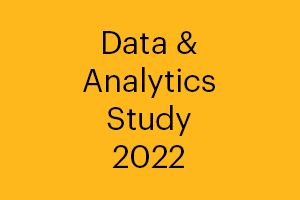In 2021, digital transformation is engrained in business success; it’s nearly impossible to have one without the other. When used appropriately, technology is a disruptive force for organizations, supporting both innovation and greater efficiencies.
It feels like every day new technologies – with the potential to impact processes, customer experience, and value – are popping up, making life a bit easier for organizations and customers. After a year plus of remote work, IDG’s 2021 Digital Business Research explores the status of digital businesses and the objectives driving organizations’ digital business strategies.
Status of Digital Business Landscape
Over the past two years, the definition of “digital business” has gone through an adjustment phase. While meeting customer experience expectations was the most common focus in 2019, today it’s slipped down to the 4th most important. This time around, enabling worker productivity has taken the top spot, likely thanks to the shift to remote work. Additionally, ITDMs say that increasing the understanding of customer needs through data collection and analysis, and better managing business performance through data availability and visibility are key definitions.
It should come as no surprise to find out that a majority of organizations have prioritized a “digital-first” business strategy – 91% be exact. This figure rises to 96% for enterprise organizations (1,000+ employees), significantly higher than their SMB counterparts who only check in at 86%. Either through adoption (52%) or plans to adopt (39%), a modernized business strategy is on the mind of many. No industry has been as quick to face change head on as healthcare – 96% of healthcare IT decision-makers (ITDMs) state that their organization has digital-first business plans.
What’s Driving Digital Business Plans?
Following the lead of defining “digital business,” the goals that supplement the strategy are employee focused. All the way up from the 8th most important objective in 2019, improving employee productivity/performance (44%) has found itself as the top objective for ITDMs worldwide. Employees can thank the pandemic for this one. When asked how their digital business objectives have changed in importance due to the pandemic, 52% of ITDMs reported that both improving employee productivity/performance and employee engagement/ collaboration have increased in importance. Further thinking about the digital business objectives that increased in priority this past year, security and business agility/resiliency rise to the top both tied at 58%. Following close behind at 56% is to create a better customer experience.
Steps in Place to Become a Digital Business
Becoming a digital business isn’t an overnight transition, it takes time and effort to plan, execute, and complete the shift. To aid businesses with their process, developing a business case/roadmap for the overall digital strategy is the most crucial step for a quarter of ITDMs. This belief is widespread, held across all job titles – as executive IT, IT management, IT professionals and business management leader report that developing a business case/roadmap is the most important step. However, developing a business case/roadmap only lands 5th on the progression level list. To date, areas such as security and tech assessments have seen more overall progress:
- Data security/protection strategy (72%)
- Technology needs assessment (66%)
- Data management strategy (66%)
- IT skills assessment (63%)
- Developing a business case/roadmap (62%)
More than 90% of companies have prioritized a digital-first approach – whether they are still in the initial stages or fully committed – but there isn’t necessarily a tried-and-true method to achieving the end goal. Each organization has their own unique implementation successes and obstacles, and it’s up to technology vendors to understand where they are in the process to effectively assist businesses on their journey. For deeper insights into the status of digital businesses and how you can assist ITDMs, download the executive summary or contact us to receive an in-depth research briefing.






